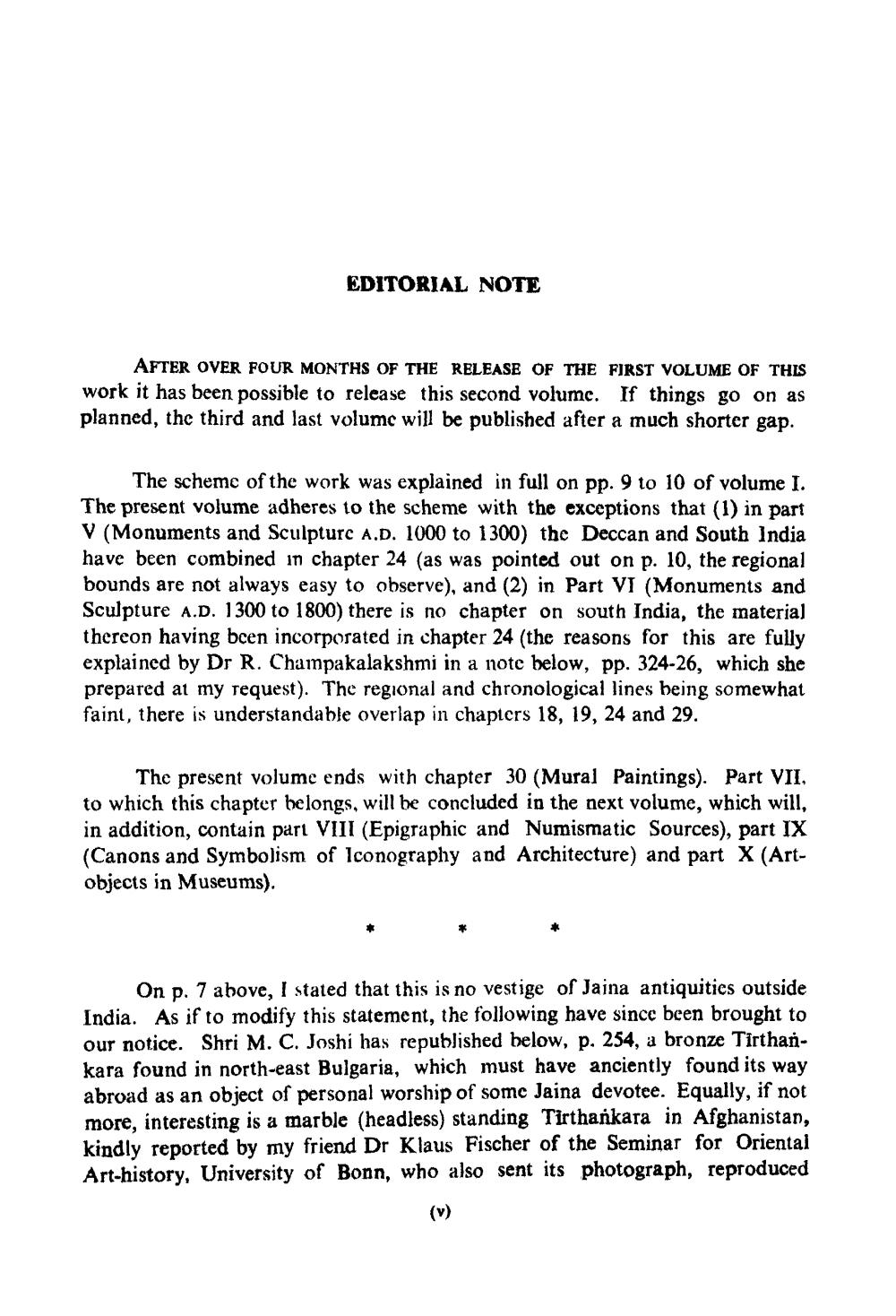Book Title: Jaina Art and Architecture Vol 02 Author(s): A Ghosh Publisher: Bharatiya Gyanpith View full book textPage 7
________________ EDITORIAL NOTE AFTER OVER FOUR MONTHS OF THE RELEASE OF THE FIRST VOLUME OF THIS work it has been possible to release this second volume. If things go on as planned, the third and last volume will be published after a much shorter gap. The scheme of the work was explained in full on pp. 9 to 10 of volume I. The present volume adheres to the scheme with the exceptions that (1) in part V (Monuments and Sculpture A.D. 1000 to 1300) the Deccan and South India have been combined in chapter 24 (as was pointed out on p. 10, the regional bounds are not always easy to observe), and (2) in Part VI (Monuments and Sculpture A.D. 1300 to 1800) there is no chapter on south India, the material thereon having been incorporated in chapter 24 (the reasons for this are fully explained by Dr R. Champakalakshmi in a note below, pp. 324-26, which she prepared at my request). The regional and chronological lines being somewhat faint, there is understandable overlap in chapters 18, 19, 24 and 29. The present volume ends with chapter 30 (Mural Paintings). Part VII, to which this chapter belongs, will be concluded in the next volume, which will, in addition, contain part VIII (Epigraphic and Numismatic Sources), part IX (Canons and Symbolism of Iconography and Architecture) and part X (Artobjects in Museums). On p. 7 above, I stated that this is no vestige of Jaina antiquities outside India. As if to modify this statement, the following have since been brought to our notice. Shri M. C. Joshi has republished below, p. 254, a bronze Tirthankara found in north-east Bulgaria, which must have anciently found its way abroad as an object of personal worship of some Jaina devotee. Equally, if not more, interesting is a marble (headless) standing Tirthańkara in Afghanistan, kindly reported by my friend Dr Klaus Fischer of the Seminar for Oriental Art-history, University of Bonn, who also sent its photograph, reproducedPage Navigation
1 ... 5 6 7 8 9 10 11 12 13 14 15 16 17 18 19 20 21 22 23 24 25 26 27 28 29 30 31 32 33 34 35 36 37 38 39 40 41 42 43 44 45 46 47 48 49 50 51 52 53 54 55 56 57 58 59 60 61 62 63 64 65 66 67 68 69 70 71 72 ... 326
